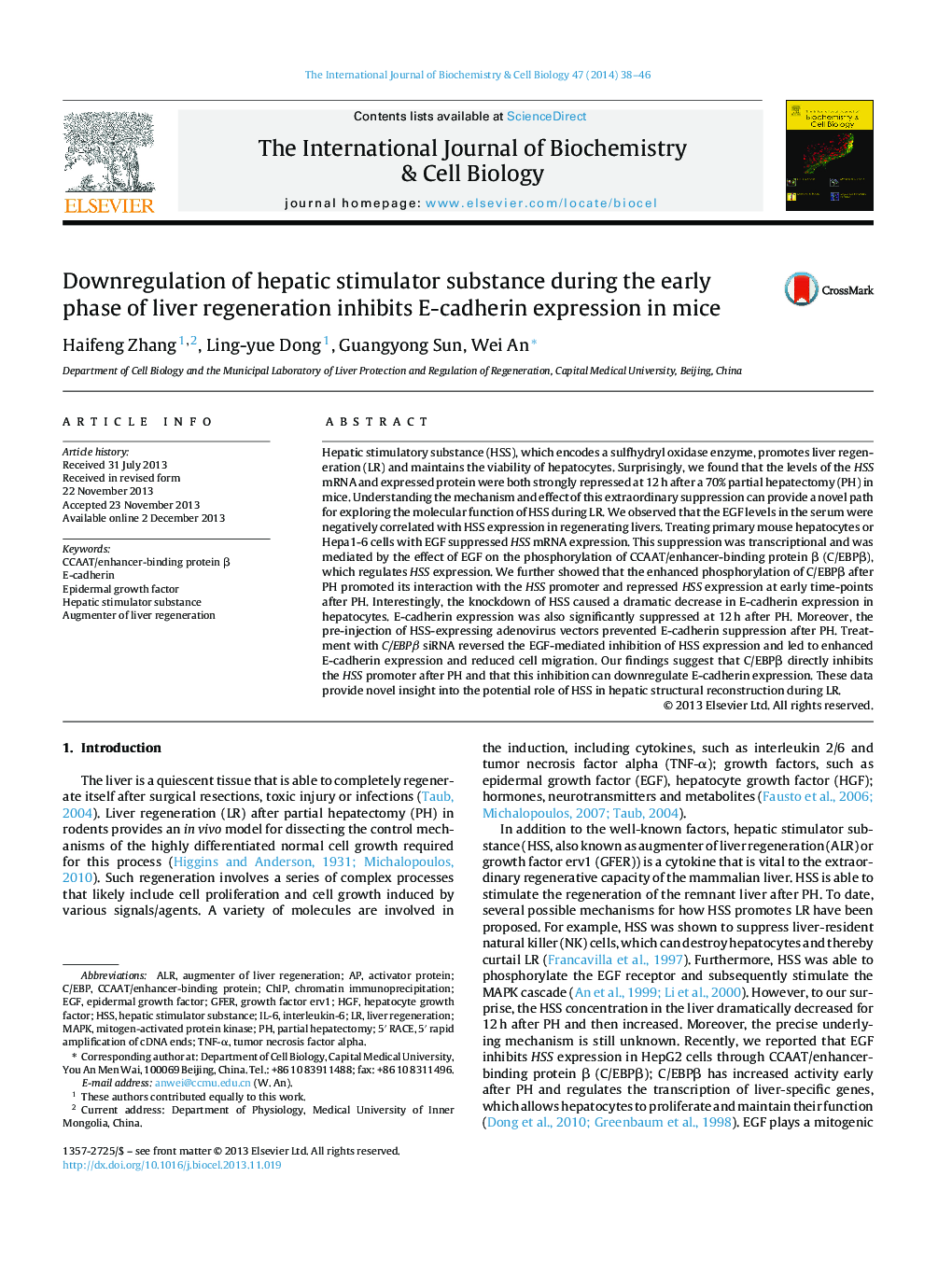| Article ID | Journal | Published Year | Pages | File Type |
|---|---|---|---|---|
| 1983587 | The International Journal of Biochemistry & Cell Biology | 2014 | 9 Pages |
Hepatic stimulatory substance (HSS), which encodes a sulfhydryl oxidase enzyme, promotes liver regeneration (LR) and maintains the viability of hepatocytes. Surprisingly, we found that the levels of the HSS mRNA and expressed protein were both strongly repressed at 12 h after a 70% partial hepatectomy (PH) in mice. Understanding the mechanism and effect of this extraordinary suppression can provide a novel path for exploring the molecular function of HSS during LR. We observed that the EGF levels in the serum were negatively correlated with HSS expression in regenerating livers. Treating primary mouse hepatocytes or Hepa1-6 cells with EGF suppressed HSS mRNA expression. This suppression was transcriptional and was mediated by the effect of EGF on the phosphorylation of CCAAT/enhancer-binding protein β (C/EBPβ), which regulates HSS expression. We further showed that the enhanced phosphorylation of C/EBPβ after PH promoted its interaction with the HSS promoter and repressed HSS expression at early time-points after PH. Interestingly, the knockdown of HSS caused a dramatic decrease in E-cadherin expression in hepatocytes. E-cadherin expression was also significantly suppressed at 12 h after PH. Moreover, the pre-injection of HSS-expressing adenovirus vectors prevented E-cadherin suppression after PH. Treatment with C/EBPβ siRNA reversed the EGF-mediated inhibition of HSS expression and led to enhanced E-cadherin expression and reduced cell migration. Our findings suggest that C/EBPβ directly inhibits the HSS promoter after PH and that this inhibition can downregulate E-cadherin expression. These data provide novel insight into the potential role of HSS in hepatic structural reconstruction during LR.
